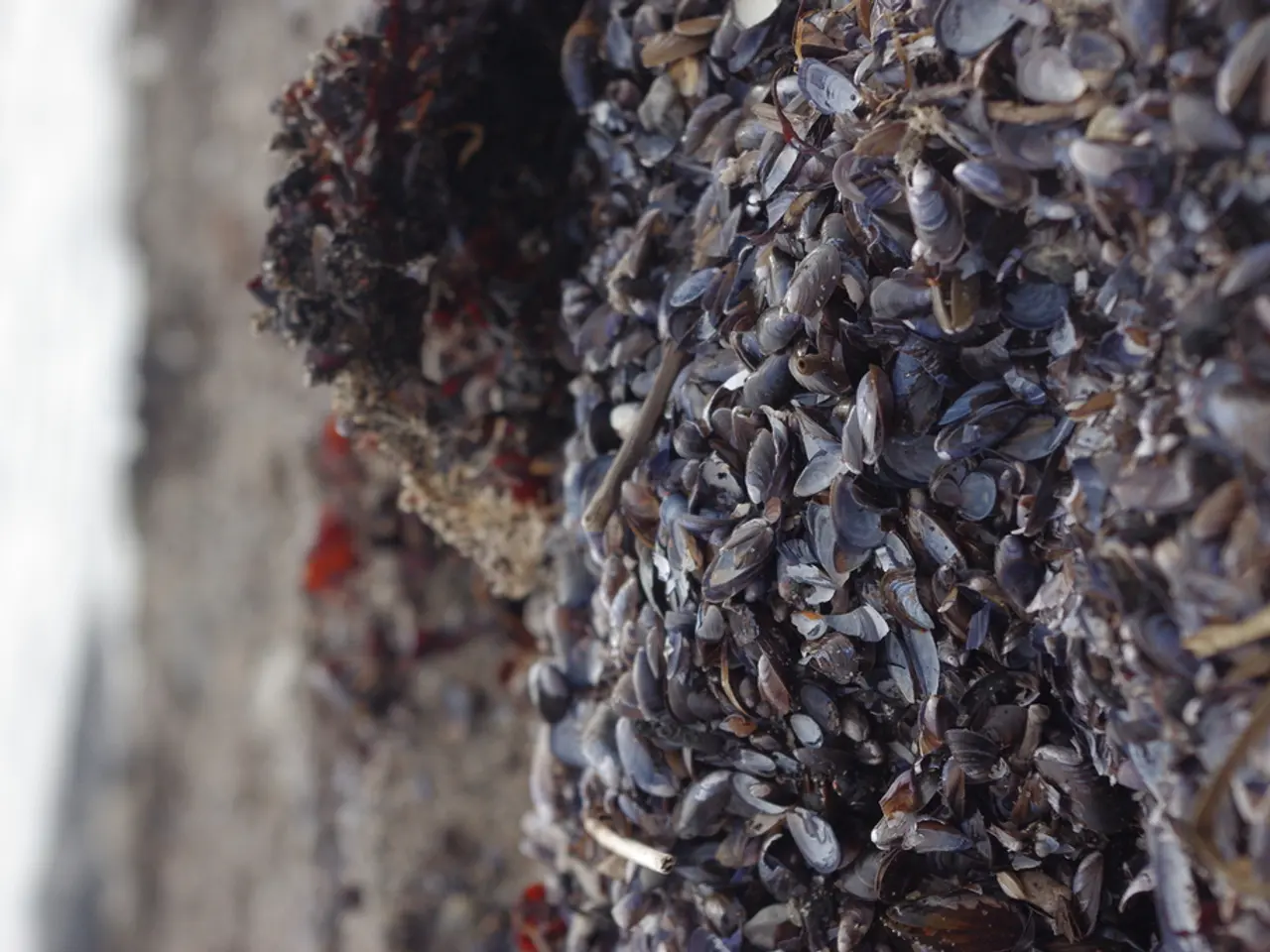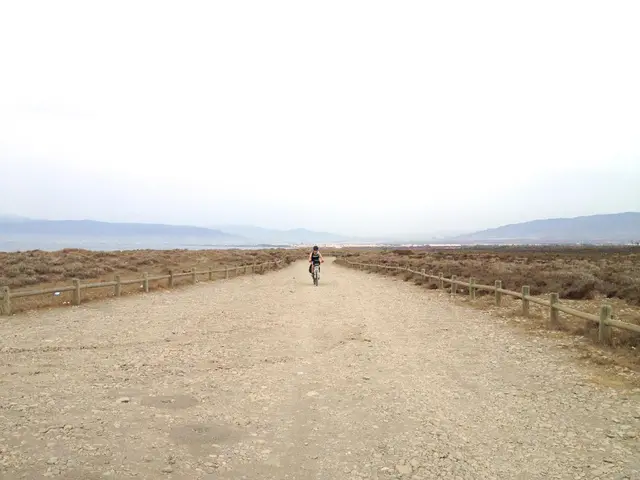Exploring the Realm of New Zealand Paua Shells
In the crystal-clear waters surrounding New Zealand, a unique and captivating treasure is being cultivated - the Paua pearl. This rare gem, known for its striking blue-green hues, is the result of a complex process that combines the natural beauty of the Paua mollusk with skilled aquaculture.
The journey begins with the farming of young Paua shells in controlled marine environments, often in the coastal waters around New Zealand and Arapaoa Island. The shells, known for their iridescent colors ranging from deep blues to bright greens and pinks, are carefully handled to preserve their vibrant appearance. This is crucial, as the colors make Paua shells highly prized for jewelry and crafts.
Once the shells have reached maturity, a nucleus is implanted inside them. This initiates the pearl formation process, during which the Paua secretes layers of nacre (mother of pearl) around the nucleus. This slow process can take several years, with the pearl maturing fully anywhere from two to eight years or more, depending on environmental factors and care.
The resulting pearls are truly one-of-a-kind, with their rare and stunning blue-green hues inspired by the beauty of the Paua shells themselves. These pearls are highly valued heirlooms and collector’s items. However, the success rate of the pearl production process is low, with only 10% of cultured Paua pearls producing a marketable blister pearl covered with nacre.
The farming of Paua pearls requires expert knowledge, thriving marine ecosystems, and considerable patience, as the combined growth time for the Paua and pearl can span three to four years or more. Much of the Paua used for gem purposes are wild-caught under license and strict quota, ensuring sustainable and responsible collection practices.
The most famous and exclusive Paua is the Haliotis iris, known for its vibrant, colorful shells. The process of culturing Paua pearls involves suspending the Paua in baskets in clean water and tending them regularly. Six species of Haliotidae are found in New Zealand, with only three being common.
Paua pearls first appeared on the market around the turn of the millennium, and since then, they have become a symbol of luxury and natural beauty. The round blister pearls, known as mabés, are primarily produced from wild-caught Paua. The flesh of the Paua is rich in protein and has been a staple diet of the Maoris.
However, the journey of the Paua pearl is not just about the end product. The process is a testament to the blend of science, nature, and skill that goes into creating these rare gems. Science alone cannot ensure success in culturing Paua pearls; the assistance and cooperation of the living creature are also essential. The nucleation process must be performed with utmost care to avoid harming the Paua, as they have no blood-clotting agent.
Paua can only be fished by free diving, and only a certain number may be fished at any one time. This ensures the sustainability of the species and the continuation of this unique and captivating treasure from the New Zealand seas. The future of Paua pearl farming lies in the careful balance between conservation, responsible farming practices, and the pursuit of beauty and luxury.
- For those interested in the unique world of Paua pearls, consider enrolling in gemmology courses to deepen your understanding of these captivating gems.
- Joining a membership with organizations dedicated to Paua pearl cultivation can provide access to exclusive workshops and events related to fashion-and-beauty, food-and-drink, home-and-garden, and travel experiences centered around these rare pearls.
- Lifestyle enthusiasts will appreciate the opportunity to incorporate Paua pearls into their wardrobe through exquisite jewelry designs or decor pieces, reflecting the fusion of natural beauty and craftsmanship.
- During your next travel adventure, visit New Zealand to witness firsthand the enchanting process of cultivating Paua pearls, combining science, nature, and tradition in the production of these rare and valuable gems.




